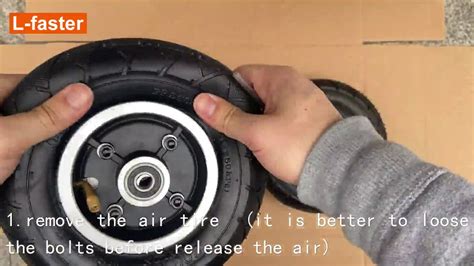Faster Tire Changes: Proven Methods
Changing a flat tire is a necessary evil for any car owner. While nobody wants to do it, knowing how to do it quickly and efficiently can save you valuable time and frustration, especially in less-than-ideal conditions. This guide will walk you through proven methods to significantly reduce your tire change time, focusing on safety and efficiency.
What Tools Do I Need for a Faster Tire Change?
Before we dive into techniques, let's ensure you have the right tools. Having everything organized and readily accessible dramatically speeds up the process. Your kit should include:
- Spare tire: Make sure it's properly inflated!
- Jack: A sturdy jack is crucial. Consider upgrading to a faster, more efficient jack if your current one is slow or cumbersome.
- Lug wrench: A high-quality lug wrench with a comfortable grip will make a big difference. Consider a breaker bar for extra leverage on stubborn lug nuts.
- Wheel chocks: Essential for safety, preventing the vehicle from rolling.
- Gloves: Protect your hands from dirt and grime.
- Flashlight (if changing at night): Proper lighting is key for safety and accuracy.
- Owner's manual: Consult it for specific instructions and torque specifications for your vehicle.
How to Prepare for a Faster Tire Change?
Preparation is key to a swift and safe tire change. Here's how to prepare:
- Safe Location: Find a level, stable surface away from traffic. Turn on your hazard lights.
- Engage Parking Brake: Firmly engage the parking brake.
- Wheel Chocks: Place wheel chocks behind the wheels opposite the flat tire.
- Gather Tools: Lay out all your tools within easy reach before you start. This prevents wasted time searching during the process.
How Long Should a Tire Change Take?
A tire change should ideally take between 15-20 minutes. However, factors like the condition of your lug nuts, the type of jack, and your experience will influence the actual time. Practicing the steps will significantly reduce your time.
What are Some Tips for Faster Lug Nut Removal?
This is often the most time-consuming part. Here are some tips:
- Proper Grip: Use both hands on the lug wrench, applying even pressure.
- Alternating Pattern: Loosen lug nuts in a star pattern (opposite nuts) to avoid warping the rotor.
- Breaker Bar (if necessary): Use a breaker bar for extra leverage on extremely tight lug nuts.
- Penetrating Oil: If lug nuts are particularly stubborn, apply penetrating oil and let it sit for a few minutes before attempting to loosen them.
How Can I Speed Up the Jacking Process?
- Proper Jack Placement: Refer to your owner's manual for the correct jacking point. Using the wrong point can slow you down and potentially damage your vehicle.
- Efficient Lifting: Raise the vehicle smoothly and steadily to the appropriate height.
How to Properly Inflate the Spare Tire?
Check your owner's manual for the recommended inflation pressure for your spare tire. Using an accurate tire pressure gauge, inflate the spare tire to the correct pressure before installing it. This avoids having to do it after installation, saving valuable time.
How Do I Tighten the Lug Nuts After the Tire Change?
Tighten the lug nuts in a star pattern, applying even pressure. Do not overtighten. After the vehicle is back on the ground, use the lug wrench to give the lug nuts a final tightening. Remember to check your owner's manual for the correct torque specifications.
What are the Common Mistakes to Avoid During a Tire Change?
- Ignoring Safety: Never work under a vehicle supported only by a jack. Always use jack stands for added safety.
- Improper Jack Placement: Using the wrong jacking point can lead to damage and slow down the process.
- Overtightening Lug Nuts: This can damage the wheel studs and make future tire changes more difficult.
- Forgetting to Lower the Vehicle: Ensure the vehicle is fully lowered before removing the jack.
By following these methods and practicing regularly (in a safe environment, of course!), you can significantly reduce your tire change time and be back on the road much faster. Remember, safety should always be your top priority.

